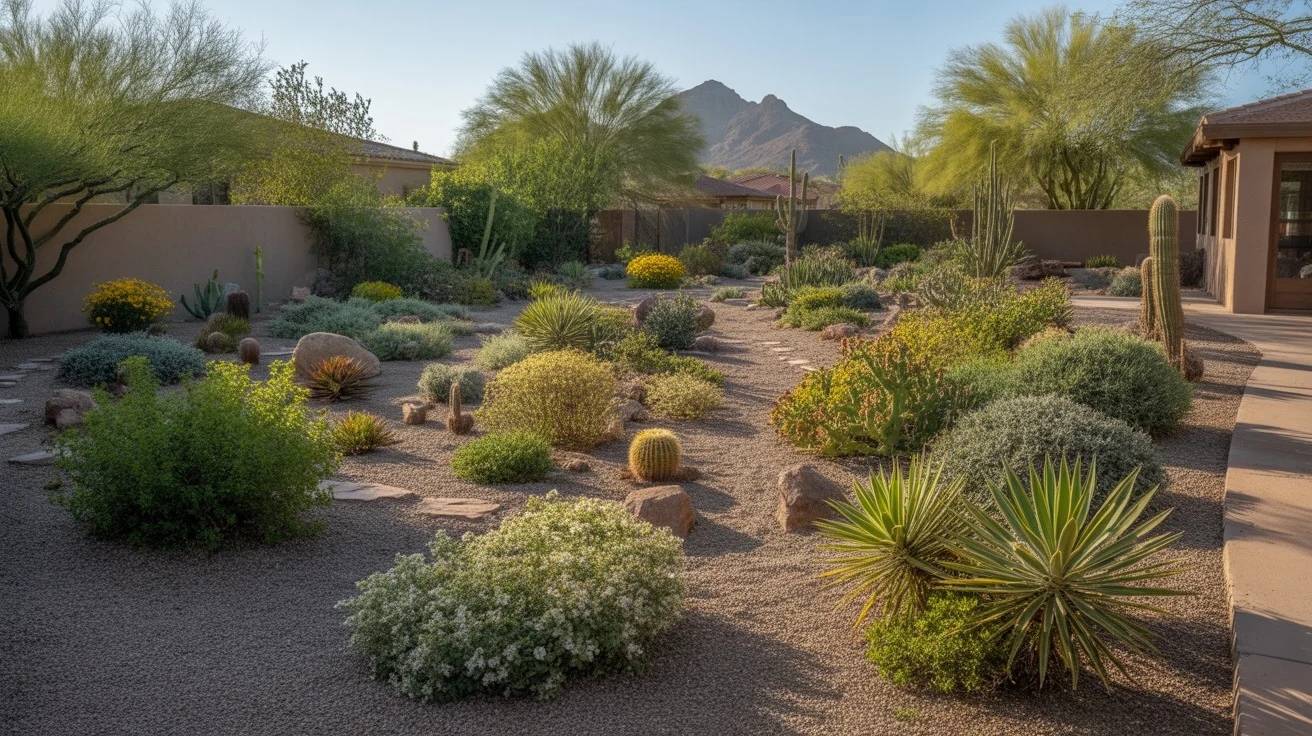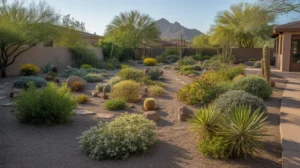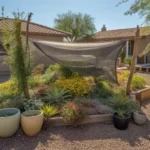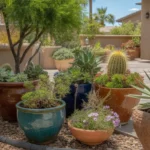Gardening in Queen Creek can be a rewarding experience, but it requires adapting to the unique challenges of the desert climate. By understanding the seasonal rhythms and employing smart strategies, you can cultivate a thriving garden that brings joy and beauty to your outdoor space year-round. In this comprehensive guide, we’ll explore top tips for successful seasonal gardening in Queen Creek.
🌱 Mastering Spring Gardening in Queen Creek
Spring is an exciting time for gardeners in Queen Creek as the weather warms up and plants begin to awaken from their winter dormancy. To make the most of this season, focus on the following key tasks:
First, prepare your soil by removing any weeds and adding organic matter like compost or well-rotted manure. This will improve soil structure, fertility, and water retention. Next, select plants that are well-suited to the Queen Creek climate, such as native desert plants, heat-tolerant vegetables, and drought-resistant perennials. Some great options include penstemon, desert marigold, and globe mallow.
When planting, be mindful of the sun exposure in your garden. Many desert plants thrive in full sun, but some may benefit from partial shade during the hottest part of the day. Group plants with similar water needs together to make irrigation more efficient. Finally, establish a regular watering schedule to help your plants establish strong root systems before the heat of summer arrives.
☀️ Thriving in the Queen Creek Summer Heat
Summer in Queen Creek can be intense, with high temperatures and low humidity putting stress on plants. To help your garden thrive during this challenging season, focus on water management and heat protection.
Efficient irrigation is key to conserving water while keeping your plants healthy. Consider installing a drip irrigation system or using soaker hoses to deliver water directly to the roots of your plants. This minimizes evaporation and ensures that water is used where it’s needed most. Mulching your garden beds with organic materials like straw, bark chips, or shredded leaves can also help retain moisture and regulate soil temperature.
To protect your plants from the scorching sun, provide shade using structures like pergolas, shade cloth, or strategically placed taller plants. Succulents and cacti are excellent choices for summer as they are adapted to store water in their leaves and stems, making them resilient to drought conditions. Regular monitoring for signs of heat stress, such as wilting or leaf scorch, will allow you to adjust your care routine as needed.
🍂 Embracing the Opportunities of Fall Gardening

As the intense heat of summer gives way to cooler fall temperatures, Queen Creek gardeners have an opportunity to refresh their gardens and plant cool-season crops. This is an ideal time to perform some essential maintenance tasks and plan for the coming months.
Start by cleaning up your garden beds, removing any dead or diseased plant material and weeds that may have accumulated over the summer. This helps prevent pests and diseases from overwintering in your garden. Fall is also a great time to replenish your soil by adding compost or other organic amendments.
Take advantage of the milder weather to plant cool-season vegetables like lettuce, spinach, kale, and root crops. These plants thrive in the cooler temperatures and can provide a bountiful harvest throughout the fall and winter months. Fall is also an excellent time to plant trees, shrubs, and perennials, as they have time to establish their roots before the heat of summer returns.
❄️ Winterizing Your Queen Creek Garden
While winters in Queen Creek are relatively mild compared to other parts of the country, it’s still important to prepare your garden for the cooler temperatures and potential frost. Winterizing your garden helps protect your plants and ensures they are ready to thrive come spring.
One key task is to insulate sensitive plants from the cold. This can be done by applying a layer of mulch around the base of the plants, which helps regulate soil temperature and moisture. For more tender plants, you may need to provide additional protection, such as frost cloth or cloches, on nights when temperatures are expected to drop below freezing.
Winter is also a good time to prune many trees and shrubs, as they are dormant and less likely to be stressed by the process. Pruning helps maintain plant health, promotes better structure, and encourages vigorous growth in the spring. Be sure to research the specific pruning needs of your plants, as some may have unique requirements.
🌿 Harnessing the Power of Native Plants
One of the secrets to successful gardening in Queen Creek is to embrace the power of native plants. These plants have evolved to thrive in the unique conditions of the Sonoran Desert, making them well-adapted to the local climate and soil.
Native plants offer numerous benefits for Queen Creek gardeners. They typically require less water, fertilizer, and maintenance than non-native species, making them a more sustainable choice. They also provide habitat and food for local wildlife, such as birds, butterflies, and beneficial insects, enhancing the biodiversity of your garden.
Some excellent native plant options for Queen Creek gardens include desert milkweed, fairy duster, and desert lavender. These plants not only beautify your outdoor space but also contribute to the health and resilience of the local ecosystem.
🧪 Experimenting with Xeriscaping Techniques
Xeriscaping is a landscaping approach that emphasizes water conservation and the use of drought-tolerant plants. By incorporating xeriscaping techniques into your Queen Creek garden, you can create a beautiful and sustainable outdoor space that requires minimal water and maintenance.
Key principles of xeriscaping include grouping plants with similar water needs together, using efficient irrigation systems, and incorporating features like rock gardens and gravel mulch to reduce water evaporation. Succulents, cacti, and other drought-tolerant plants are the backbone of a xeriscape garden, providing interesting textures and forms while requiring little water.
Embracing xeriscaping doesn’t mean sacrificing color or visual interest. Many drought-tolerant plants, such as bougainvillea, palo verde, and ocotillo, offer stunning blooms and unique foliage that can add character and charm to your Queen Creek garden.
By implementing these seasonal gardening tips and strategies, you can create a flourishing garden that thrives year-round in Queen Creek. Embrace the unique challenges and opportunities of the desert climate, and you’ll be rewarded with a beautiful, resilient outdoor space that brings joy and connection to nature.











